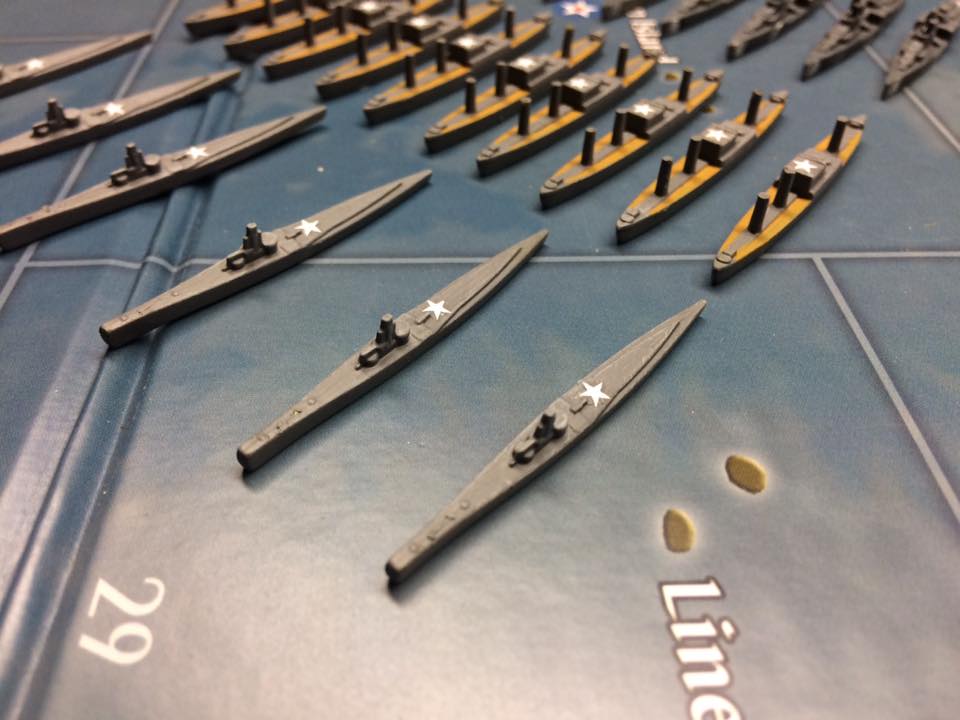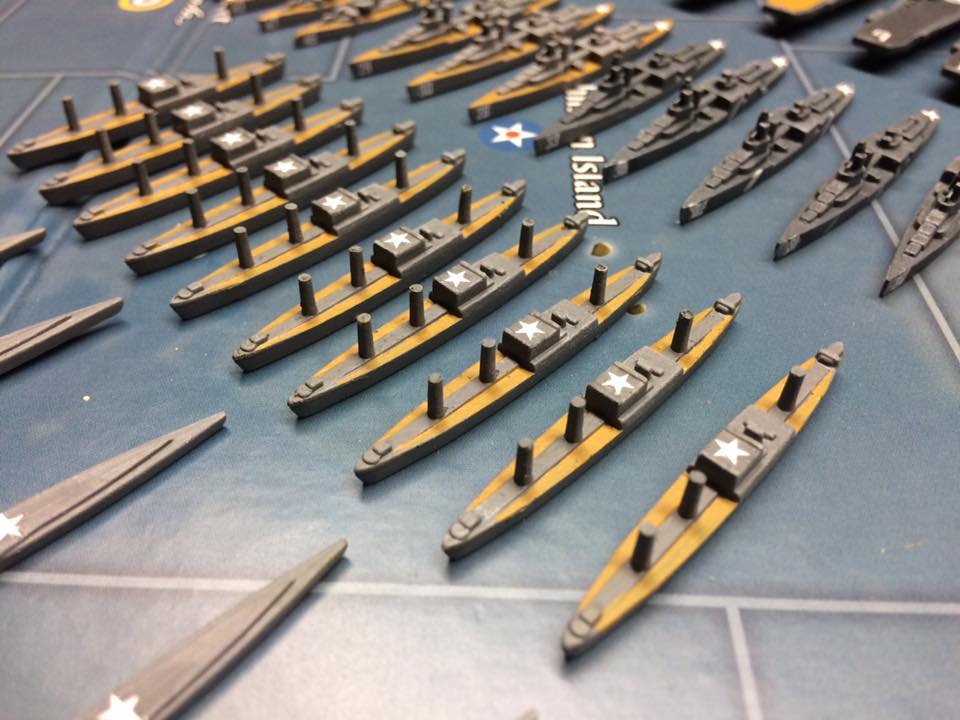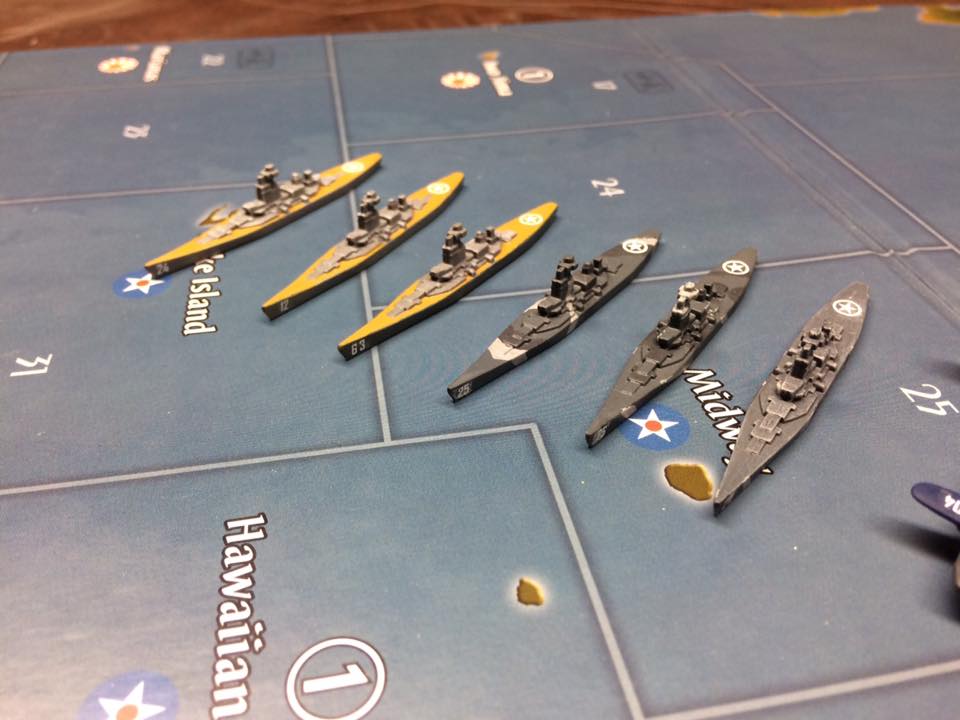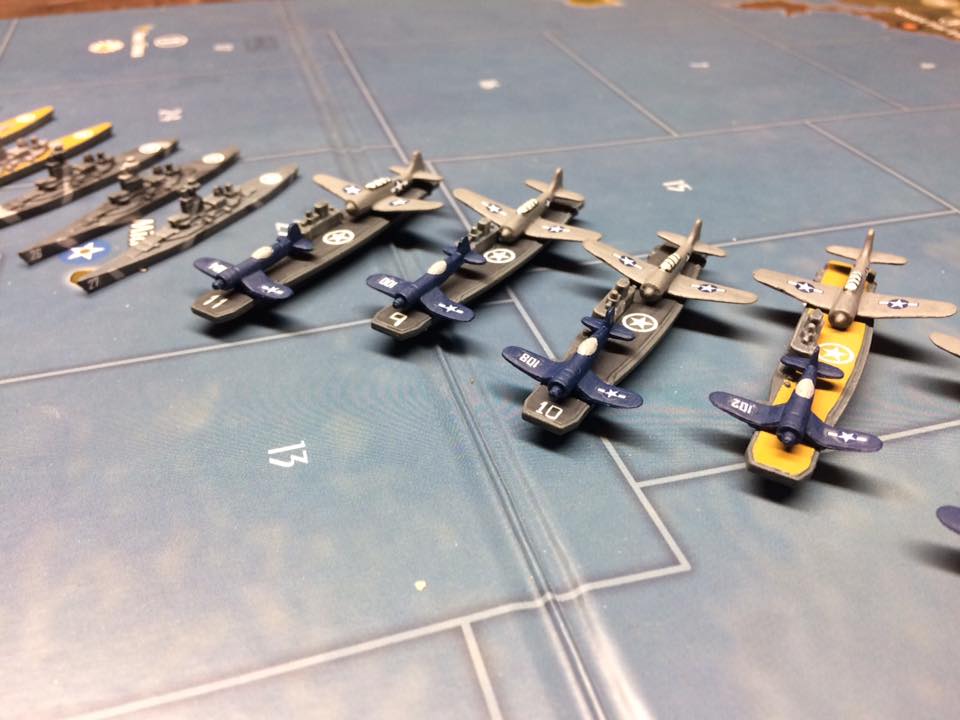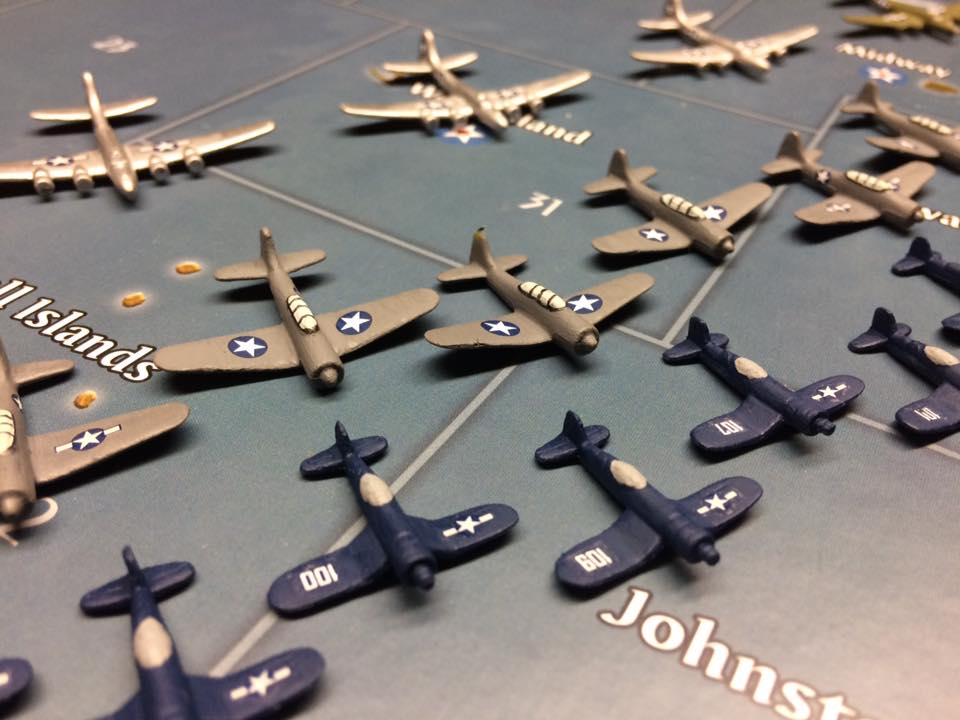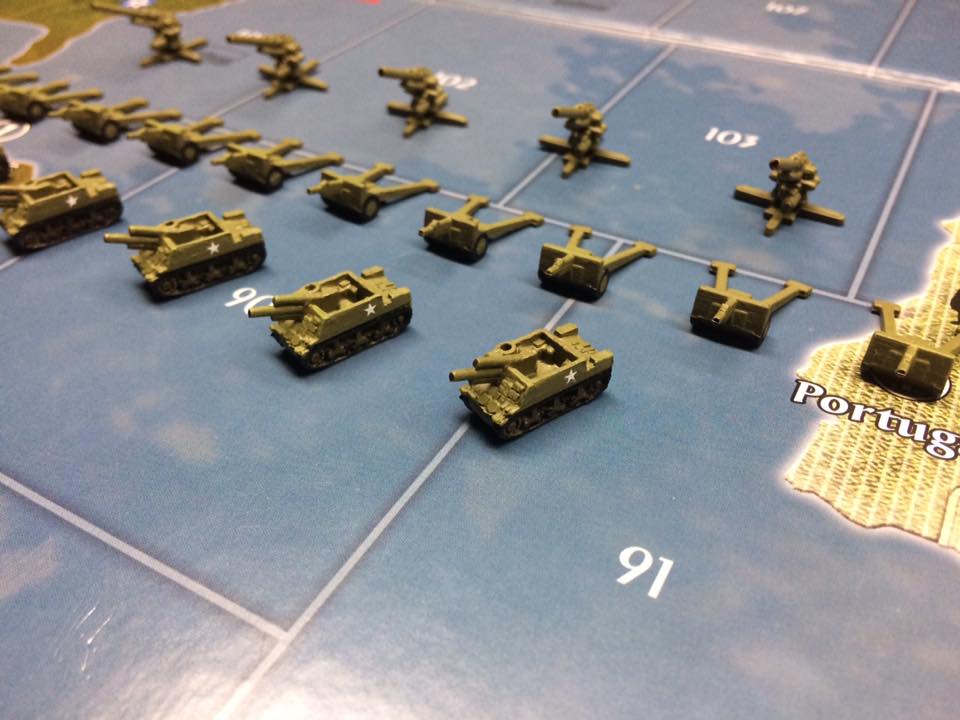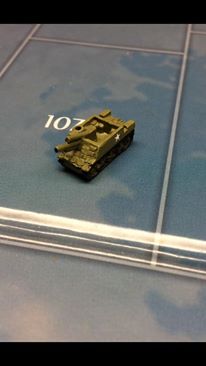@FastHeinz:
I used Corsair fighters from HBG as carrier fighters. A close eye can spot the U.S.S. Missouri.
I like your work, it’s top notch… very serious, its really fine painting… I will say however, choosing the Corsair as your default carrier fighter, while it looks very nice, historically speaking, is hard to accept as the main carrier fighter… The combination of an aft cockpit and the Corsair’s long nose made landings hazardous for newly trained pilots. During landing approaches it was found that oil from the hydraulic cowl flaps could spatter onto the windscreen, badly reducing visibility, and the undercarriage oleo struts had bad rebound characteristics on landing, allowing the aircraft to bounce out of control down the carrier deck… It was also found that the Corsair’s right wing could stall and drop rapidly and without warning during slow carrier landings. In addition, if the throttle were suddenly advanced (for example, during an aborted landing) the left wing could stall and drop so quickly that the fighter could flip over with the rapid increase in power… there were so many problems with the F4U’s use on carriers, Corsair deployment aboard U.S. carriers was delayed until late 1944… by which time there were almost no Japanese left to fight in Carrier battles. The Corsair’s claim to fame mostly comes from the USMC’s use on island bases, not the Navy’s use on carriers.
When I think carrier battles in the Pacific, I think of F4F Wildcat and F6F Hellcat. Of course, that’s just me… I’m a stickler for the standard.
None of my musings have anything to do with the fine work you’ve done… I’m super-jelly of all the fine detail (down to the battleship numbers, and different deck colors you’ve used) and wish I had a thimbleful of talent that you have.

